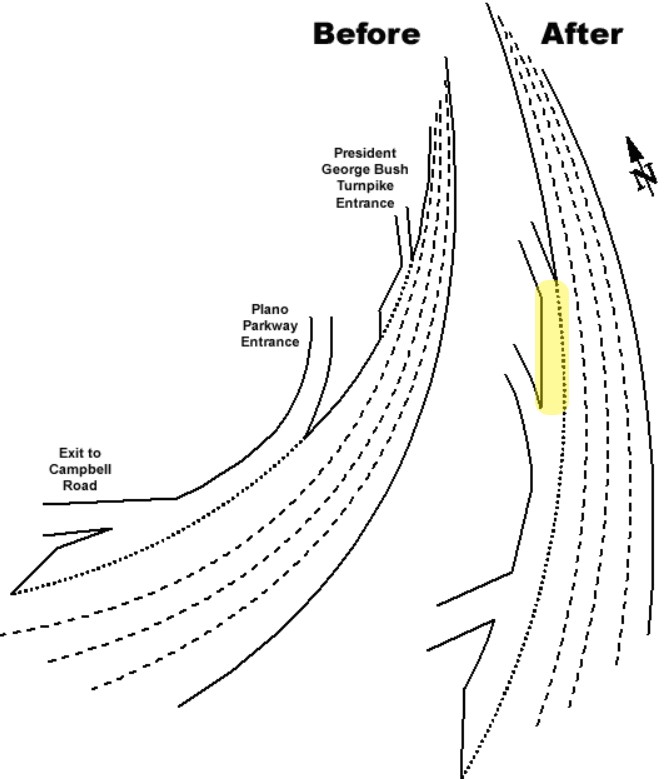After the community caught Metro and Caltrans defying federal clean air law, Metro radically pared back its 710 Freeway expansion plans.
In 2018, Metro approved a $6 billion plan that would have added at least forty new lane-miles to the lower 710 Freeway. Metro and Caltrans canceled that plan in 2022, pledging to replace it with a new multimodal investment plan. In January 2024, Metro shared its latest draft 710 Freeway widening plan (called the 710 CMIP – Corridor Mobility Improvement Plan) which calls for adding around four new lane-miles.
That’s good news. Kudos to the community, mainly the Coalition for Economic Health and Justice (CEHAJ), for decades of resistance that got Metro and Caltrans to reluctantly rein in most of their harmful 710 widening. Kudos to Metro and Caltrans for having taken some big steps in the right direction.
But they’re not quite there yet.
Now Metro is repeatedly claiming that their draft 710 Freeway widening plan projects are “not expanding the freeway by any means whatsoever” and “expanding the freeway in any shape or form” [italics are Metro’s].
This is not true.
Metro claims “no expansion whatsoever” – and at the same time that they won’t rule out demolishing homes. Really.
The threat of displacement is serious enough that the area’s County Supervisor Janice Hahn is pressing Metro to commit to no home demolitions for the 710 Freeway expansion.

In their current 710 Freeway expansion plan, Metro and Caltrans are proposing to add new freeway lanes in two stretches, both in Long Beach:
- from Willow Street to Wardlow Road – about 1 mile
- from Del Amo Boulevard to Long Beach Boulevard – about 1 mile

The lower of those two widenings – Willow to Wardlow – would be right up against lots of pollution-burdened West Long Beach homes, many within a few feet of the existing freeway sound walls.


Metro’s new 710 Freeway lanes would be “auxiliary lanes” – lanes that extend from one onramp to the next off-ramp.

Metro and Caltrans highway builders have dozens of L.A. County “aux lanes” projects under construction and planned (even including in the lower 710 project corridor on the 91 Freeway in North Long Beach), because aux lanes expand freeway capacity, while technically not widening the main stem of the freeway. Metro and Caltrans take advantage of a loophole in state policy that says short aux lanes (less than a mile long) are considered not to increase driving.
For these short aux lanes, instead of completing a full environmental impact report (EIR), agencies are allowed to do an abbreviated process, often just a Finding of No Significant Impact (FONSI). Instead of spending a couple years holding meetings and gathering public comment, a project adding multiple new short aux lanes typically gets one public scoping meeting at the outset. Then Metro and Caltrans design the project, and file a brief FONSI or similar document with the state. The aux lane loophole also allows Metro and Caltrans to omit multimodal components that the state now requires for projects that induce driving – called VMT (Vehicle Miles Traveled) mitigation.
The nearly four miles of auxiliary lanes are just the CMIP’s freeway expansions that are clear and obvious. There appears to be a lot more freeway expansion buried within various “interchange improvements” and “connector improvements” projects, listed in the CMIP with just project titles and no further description.
There’s more not to like about Metro’s draft 710 CMIP. Metro is prioritizing cars over other forms of transportation (despite Metro claiming it isn’t). Metro is claiming many projects currently lacking detail are multimodal (in the past Metro has often claimed this on projects with no or de minimis multimodal components).
Perhaps most irritating is how thickly Metro is slathering its plan promotion with statements about how awesome the CMIP is for equity: “We’re not exaggerating when we say that equity is built into this plan’s DNA” and “the entire CMIP can be seen as an equity initiative.” Is Metro really saying – for equity – they would go into pollution-burdened Black and Latino communities to tear down homes?
But, hey, Metro says they are not expanding the freeway in any shape or form.
Don’t buy the gaslighting.
Submit your own public comment by Monday April 1. Comment via email to 710corridor@metro.net or by calling (213) 922-4710.
Below are some possible talking points for comments:
- CEHAJ has long demanded Metro and Caltrans commit to all of the following conditions for any 710 Freeway project/s: no home demolitions, true zero-emission technology, and include local hire.
- CEHAJ recently submitted a comment letter critical of problematic hydrogen-powered solutions embedded in Metro’s proposed plan, urging truly zero-emission solutions instead.
- Supervisor Janice Hahn is calling for an ironclad Metro commitment to no residential demolitions for 710 project/s.
- Support Hahn and CEHAJ’s demand for no residential demolitions, or go even further urging that Metro keep freeway work within the existing freeway right-of-way, with no displacements of homes, apartment buildings, retail buildings, or any other uses.
- Urge Metro to demonstrate its multimodal commitment by approving funds right away to immediately go to all 710 corridor bus, bike, first/last mile, rail electrification, electric truck, Shoemaker Bridge, and complete streets projects.
- Urge Metro to temporarily pause approving proposed freeway auxiliary lanes, interchange improvements, and connector improvements in order to study them further, and, before approval, share design details that show how they are “not expanding the freeway by any means whatsoever.”


